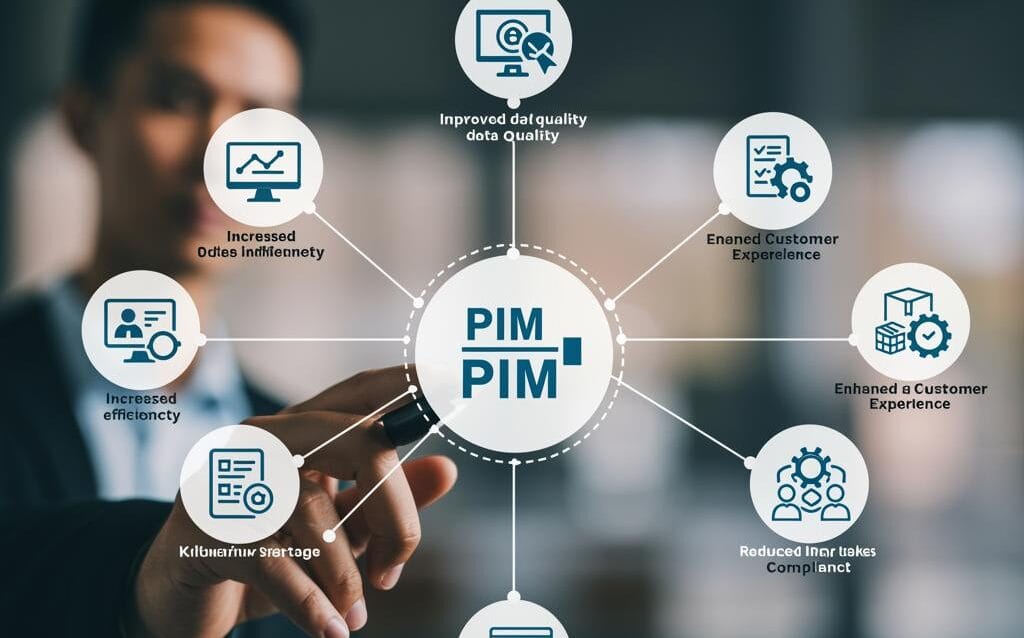PIM Implementation Strategy: A Step-by-Step Guide
Product Information Management (PIM) Implementation Strategy: A Comprehensive Guide
In today’s competitive market, accurate and consistent product information is crucial for driving sales, enhancing customer experience, and streamlining operations. A Product Information Management (PIM) system offers a centralized repository for managing all product-related data. However, a successful PIM implementation requires a well-defined strategy. This guide provides a comprehensive overview of key considerations and best practices for implementing a PIM system effectively.
Understanding Your Needs and Defining Goals
Assessing Current Challenges and Pain Points
Before diving into PIM implementation, it’s essential to identify the existing challenges related to product information management. These might include:
- Inconsistent product data across different channels (e.g., website, e-commerce platforms, print catalogs).
- Time-consuming manual processes for updating and enriching product information.
- Difficulty in managing product variations and attributes.
- Lack of visibility into product data quality.
- Poor customer experience due to inaccurate or incomplete product information.
Defining Clear and Measurable Goals
Based on the identified challenges, define specific, measurable, achievable, relevant, and time-bound (SMART) goals for the PIM implementation. Example goals include:
- Reduce time-to-market for new products by 20% within six months.
- Improve product data accuracy by 15% within three months.
- Increase online sales conversion rate by 5% within one year.
- Centralize all product information into a single source of truth within nine months.
Stakeholder Alignment
Ensure all relevant stakeholders (e.g., marketing, sales, product development, IT) are involved in defining the goals and understanding the benefits of PIM. Their input is crucial for a successful implementation.
Selecting the Right PIM Solution
Evaluating PIM Vendor Options
The PIM market offers a wide range of solutions, each with its own strengths and weaknesses. Consider factors such as:
- Functionality: Does the PIM system offer the required features, such as data modeling, workflow management, digital asset management (DAM) integration, and multi-channel publishing?
- Scalability: Can the system handle your current and future product data volumes?
- Integration Capabilities: Does it integrate seamlessly with your existing systems, such as ERP, CRM, and e-commerce platforms?
- User Interface: Is the system user-friendly and intuitive for your team?
- Vendor Reputation and Support: Does the vendor have a proven track record and provide reliable support?
- Cost: Consider the total cost of ownership, including licensing fees, implementation costs, and ongoing maintenance.
Conducting a Proof of Concept (POC)
Before committing to a particular PIM solution, conduct a POC to evaluate its capabilities in a real-world scenario. This will help you identify any potential issues and ensure that the system meets your specific requirements. Use real product data and involve key stakeholders in the evaluation process.
Choosing the Right Deployment Model
Decide on the deployment model that best suits your needs: cloud-based, on-premise, or a hybrid approach. Consider factors like cost, security, and IT infrastructure.
Data Migration and Enrichment
Developing a Data Migration Strategy
Migrating existing product data to the new PIM system is a critical step. Develop a comprehensive data migration strategy that includes:
- Data Cleansing: Identify and correct any errors or inconsistencies in your existing product data.
- Data Transformation: Map your existing data fields to the PIM system’s data model.
- Data Validation: Ensure that the migrated data is accurate and complete.
- Phased Approach: Consider migrating data in phases to minimize disruption.
Establishing Data Governance Policies
Define clear data governance policies to ensure data quality and consistency. These policies should cover:
- Data Ownership: Assign responsibility for maintaining specific product data attributes.
- Data Entry Standards: Establish guidelines for data entry and validation.
- Data Approval Workflows: Implement workflows for approving changes to product data.
Data Enrichment and Optimization
Use the PIM system to enrich your product data with additional information, such as:
- High-quality product images and videos.
- Detailed product descriptions and specifications.
- Customer reviews and ratings.
- SEO-optimized content.
Implementation and Training
Phased Implementation Approach
Implement the PIM system in phases, starting with a pilot project. This allows you to test the system’s functionality and identify any potential issues before rolling it out to the entire organization. Focus on a specific product category or business unit for the initial phase.
Comprehensive Training Programs
Provide comprehensive training to all users of the PIM system. Training should cover:
- System Navigation and Functionality.
- Data Entry and Validation Procedures.
- Workflow Management.
- Reporting and Analytics.
Ongoing Support and Maintenance
Establish a plan for ongoing support and maintenance to ensure the PIM system remains operational and effective. This includes:
- Regular System Updates and Patches.
- Technical Support for Users.
- Performance Monitoring and Optimization.
Conclusion
Implementing a PIM system is a significant undertaking, but it can deliver substantial benefits in terms of improved product information management, enhanced customer experience, and increased sales. By following a well-defined strategy, selecting the right PIM solution, and investing in data migration, enrichment, and training, you can ensure a successful PIM implementation that drives business value. Remember to continuously monitor and optimize your PIM system to meet evolving business needs.

